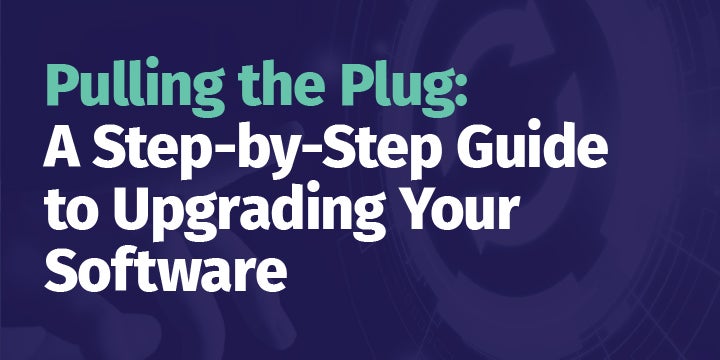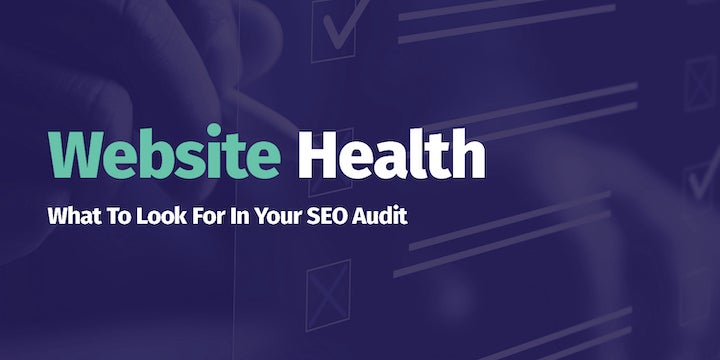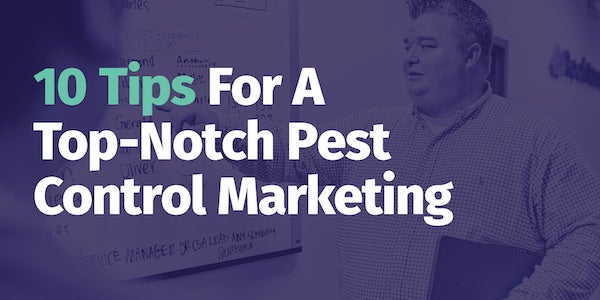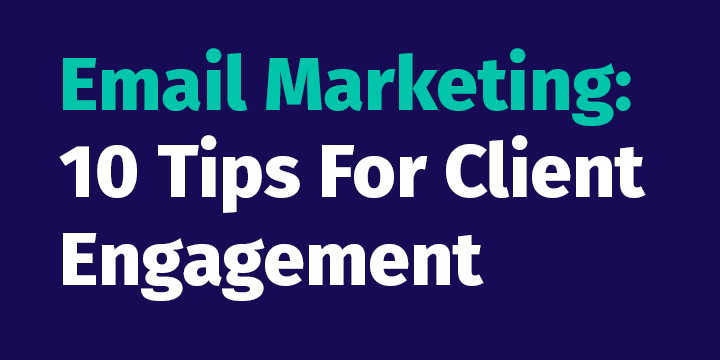7 Social Media Tips For Your Field Service Business

Use Social Media to Boost Your Field Service Brand
Expand your audience and start connecting with people. Learn strategies you can use to build your brand across Facebook, Twitter, Instagram, and other social media platforms.
Why Staying Connected Matters in Field Service
When social media started gaining traction in the late 2000s, it quickly began to change the way many industries did business forever. Every day, social media continues to change the way people and brands interact. The best social media masters can utilize the full potential of platforms like Facebook and Twitter to turn followers into customers and customers into brand advocates. This guide is designed to help you on the way to doing exactly that with your field service business.
Whether it be pest, pool, or lawn, there will always be a market for the field service industry. But if you can’t connect with those in the markets you serve, you risk losing them to a competitor.
Many field service companies thrive primarily with the help of good word-of-mouth. Social media provides a way for field service businesses to take that word-of-mouth online, helping them stand out from the competition and amplifying their voices to reach members of the community in need of their services. Luckily, the field service industry lends itself well to numerous social media platforms, and those that strategize correctly can see big gains in both the audience they’re able to reach and how effective their message can be.
According to Pew Research, about three quarters of adults in the United States are active on at least one social media network, with approximately 90% of adults aged 18-29 on at least one social media network. With such a wide reach, you can rest assured that there are active users in your area in need of field services. Using social media effectively lets them know to call you first when they have issues while allowing you to respond directly to their comments, questions, and concerns.
No matter the size of your field service business or how active you’ve been on social media in the past, this guide will help you understand the current social media landscape and what you need to do to succeed and start boosting your brand across Facebook, Twitter, Instagram, and beyond. Let’s take a quick look at some of the many ways that the world has changed to impact marketing, and how marketing has changed to impact the world.
Social Media Platforms and Strategy
In recent years, awareness of social media platforms and the vital role they can serve in the business world has continued to grow as more and more people take their businesses online. Having no Internet presence is naturally detrimental to your field service business if potential customers can’t find you with a Google search, but having no social media presence will severely cut into the potential brand awareness you could be building.
Even if you are familiar with the big players, it’s important to understand the differences between how each one works in order to strategize your social media planning. While there are new social platforms emerging every day, for now, we will focus on the most important ones field service business should focus on and how to make the most of each platform in 2021 and beyond.
Here is a quick rundown of the biggest social media platforms you should start becoming active on, as well as some important aspects you should be aware of to help you succeed:
With the highest number of active users across all social media platforms (2.7 billion), Facebook offers savvy field service providers with no shortage of potential customers at their fingertips. Based on user demographics, Facebook is also one of the best ways for field service providers in particular to find potential customers that perfectly fit their niche.
In addition to its built-in consumer base, Facebook has also gone through extensive updates over the years to not only allow you to reach the largest pool of potential followers but also enable you to break down that group to find the users most likely to convert into customers. Facebook also puts several tools at your disposal to help you catch and hold their attention.
As a field service provider, creating and maintaining a Facebook profile is essential for social media success. For the best results, keep your posts relatively sporadic on Facebook, one or two a week. However, this makes Facebook ideal for longer-form posts that talk about recent projects or events, promote a new blog, or introduce members of the team to your followers.
Your content should drive Facebook. Fill your timeline with helpful information that your audience finds valuable, interesting, or otherwise relevant to their lives. Use it as a showcase for your best, most helpful blogs and resources. You should also use this platform to create posts that detail some of the most important treatments you carry or to humanize your business by introducing members of your team and detailing their roles.
Twitter rose to prominence because it gave people the power to follow and directly interact not only with their friends but also with celebrities and causes they cared about. With over 330 million active users, while Twitter is used in different ways by different people, the one-to-one communication Twitter facilitates between users creates valuable opportunities for brands to make personal connections with potential customers.
Clever marketers have learned to pay close attention to trending hashtags both to keep up with what’s happening in the world and within their industries, as well as to inform their strategy moving forward. If a hashtag that’s relevant to your brand starts to trend, it provides an excellent opportunity to get noticed if you can capitalize on it.
However, it’s important to remember that even though Twitter is geared toward shorter but more frequent posts than Facebook, you should still come in with a measured approach rather than tweeting as much as you can and hoping something gets picked up. Posting too much or responding to trends that don’t align with your brand can still hinder your effectiveness by muddying the brand image you’re trying to present.
For field service providers, Twitter is primarily effective for promoting blogs and other content that directs readers to your website, sharing special service offers, responding directly to comments or concerns from customers, and showcasing positive feedback you receive by retweeting it. Even without these longer-form content pieces, you should maintain activity on Twitter for five primary reasons:
To keep your audience updated on how your business is going
To retweet relevant content related to your industry or to your customers
To monitor which hashtags are trending
To keep up with what your competition is doing
To respond directly to any concerns or complaints that people bring up
Follow these five primary directives, and you will start developing your presence on Twitter in no time. Just remember that when you reply to complaints, your response should be actionable and focused on resolving the issue rather than simply apologizing or trying to deflect.
While you should post more often on Twitter than Facebook, quality and relevance are still the most important factors. For the best results, stick to one to two posts a day using a maximum of one relevant hashtag per post. Using too many hashtags will clutter your message and turn off readers; various studies have shown that shareability for tweets falls off sharply with each hashtag after the first, so keep to one relevant hashtag per tweet (if you choose to include one at all).
From a marketing perspective, part of Instagram’s effectiveness as a tool comes from its ever-growing user base. The number of active Instagram users continues to rise, reportedly surpassing one billion active users as of 2020. Additionally, the majority of accounts increase their followers by 10-15% year over year. These statistics indicate that Instagram users don’t leave the platform, but in fact, steadily increase their activity over time.
There are numerous incentives for businesses to maintain an active presence on Instagram. For one, Instagram boasts the best brand engagement across all industries of any social media platform, with Facebook reporting in 2019 that 66% of their survey respondents indicating that they view Instagram as a platform that enables interactions with brands. The same report also indicated that the majority of Instagram users were open to receiving ads from brands they liked on Instagram.
Instagram is a social media platform designed primarily with image and video sharing in mind. As such, it provides field service companies an excellent opportunity to show a different side of the business. Use Instagram to give your company a face, featuring technicians and office staff in posts so you can preemptively familiarize your audience with the people they’re going to interact with should they contact you for a consultation.
Post to Instagram one to two times a week, keeping to one relevant hashtag where appropriate. You should also make extensive use of Instagram’s “Story” feature. Stories give you the opportunity to promote your main posts by giving your audience a quick peek into what they can expect, like a commercial for your post. Read on for more information on stories and how to use them effectively.
As social media developed for professional connections, it should come as no surprise that LinkedIn is an excellent platform to spread your business and brand. With 303 million active monthly users, LinkedIn also provides a wealth of different potential clients to segment into.
Spotlight services you offer and the skillset your employees provide. LinkedIn is also the perfect place to share different publications that you’ve created or longer-form content that can help drive other business owners to invest in your field service business. Depending on the size of your business, LinkedIn can also be the perfect platform to start building B2B connections that could help you expand your services down the road.
7 Social Media Tips for Your Field Service Business
Now that you know the players, it’s time to get in the game. Here are seven essential tips you should use across Facebook, Twitter, Instagram, LinkedIn, and beyond to start growing your brand and getting seen:
1. Find Your Target
Your first step on the road to social media mastery is to isolate exactly the type of person you’re going to try to reach. While each of the big social media platforms boasts millions of users, only a select few will be in need of the services you provide. Cultivating a strong social media presence for your brand is a time-consuming process, so you need to focus on the people most likely to become customers if you want the best return on your investment.
Before you start taking to the web and spreading your brand, narrow your focus to the people who will most likely react positively to you. Compile data on your current customers in order to find patterns and find out how best to approach potential future customers. Those customers will determine both the message you create, the way you present that message, and the platform you present it on. If you’re just getting started on social media, start with your current customer’s demographics as a base and try to visualize the types of messages that would most appeal to them.
You should also take into account the user demographics of each platform you intend to use. For instance, while Instagram practically corners the market on young adults 18-29, if you’re trying to sell residential services, you might consider spending more of your time on Facebook and Linkedin where people 30 and over (the people more likely to be homeowners) make up a larger percentage of the user base. On the other hand, users that are on Instagram report being more accepting of branded content than on other platforms, so if your perfect type of customer is active on Instagram, it could be a golden opportunity for your business.
"Instagram practically corners the market on young adults 18-29"
Once you get into social media posting, you’ll be able to target prospective customers based on age range, household income, education level, and so on. This allows you to crossover your targeted segments and gives you the ability to have the set parameters you’re trying to target but then hit them specifically when life events or trends happen. You can then capitalize on recent events in their lives and in the world.
However, don’t be TOO specific with your targeting: target too broadly, and you pay more for poorer-performing ads and lower engagement rates; target too specifically, and you could end up only showing up to a minuscule amount of people. Find a good balance. Don’t cast a wider net; cast a tighter net. Having a detailed persona in mind also helps boost your paid ads’ effectiveness, to be discussed in more detail below.
"Facebook and Linkedin where people 30+"
Once you’ve found your target audience and have established which platforms you’re going to use to reach them, use the tools each one puts at your disposal to inform your strategy – play to the benefits of each platform.
2. Focus on the Essentials
Once you’ve determined the audience you’re trying to reach, you need to plan the type of image you want to present and align every aspect of your social posting strategy to match this image. No matter how funny your post might have been or how many hashtags you use, if your posts don’t line up with your brand, they’re not going to be effective at endearing people to you and what sets you apart.
Design every social media campaign and post with the ultimate goal of helping you fulfill your business objectives. Think about what posts you’re going to make and how they will be structured well in advance. You can always respond to new developments and right the ship as necessary, but overall it’s best to have a strategy for how you’re going to approach each quarter.
Develop a content calendar for when things will post. Plan your media posts based on maximizing the benefits and minimizing the downfalls of all the social media platforms you integrate into your overall strategy. Schedule your pins, tweets, and posts to post in advance, as this will allow you to arrange them as necessary to best suit your intended message.
Don’t make posts on trends or news unless they are directly related to your brand. Listen to what your audience is saying, but you dilute your brand if you try to hop onto every hashtag that springs up. Plan your posts for holidays and events well in advance, and create content to provide a unified experience for your audience when they read what you have to say about these events. You should also have any hashtags you think you’ll use planned in advance.
As always, emphasize the personality of your brand and your involvement in the community.
Brand essentials also concern your business’s outreach and community involvement. If you are collaborating with a non-profit organization or something similar, this is a good thing to promote so long as it’s a cause you generally care about.
3. Time Your Posts
Social media scheduling tools are incredibly intricate in what they can do – use that to your advantage. Don’t just schedule what day the post goes live but specifically set them to post when they have the best chance to get noticed. Timing your posts helps you fix any holes in your net that could allow a great potential customer to slip through.
Posting at certain times encourages engagement more than others. For the best results, you have to plan not only what posts you’ll make but also the specific time to post them. For a field service company looking to attract more customers, the following are recommended times to post to different social media sites in order to get the most engagement:
Facebook posts are best posted on Wednesday afternoons around 3:00 pm —5:00 pm, 12:00 pm —1:00 pm on weekends, and 1:00 pm —4:00 pm on Thursday and Friday afternoons.
Twitter posts are best posted around 12:00 pm —6:00 pm on weekdays. During that period, tweets posted around 5:00 pm —6:00 pm generally receive the highest amount of retweets.
Instagram engagement stays relatively level throughout the week, though it is generally highest on Mondays and lowest on Sundays. Instagram posts are best scheduled on weekdays during regular business hours, but see the best results when posted around 3 :00 pm to 4:00 pm
For LinkedIn, while weekdays during business hours are considered optimal posting times, the specific periods of 7:00 am —8:00 am and 5:00 pm —6:00 pm Tuesday through Thursday and 10:00 am —11:00 am on Tuesdays brought the best levels of clicks and shares.
Take the day of the week into account as well. For instance, people often respond better to funny and upbeat content on Fridays; they’re in a good mood and ready for the weekend.
You should also make extensive use of short-time posts using Instagram Stories and Facebook Live posts. These are relatively immune to algorithm shifts as they will always appear at the top of your profile. Backup any Instagram post you make with a relevant Instagram Story that links back to it. Stories and Facebook Live videos can also go behind-the-scenes and give a face to your brand. Ideally, this makes your customers feel like they’re part of a group when they interact with you.
4. Visuals
Aesthetics are incredibly important in catching the eye. The best visuals can not only attract readers but hold their attention once you’ve gotten it, increasing the likelihood they’ll interact with you.
Make your posts visually appealing by including numerous media such as videos and pictures to break up the content. People are more likely to share visual content than strictly text content on social networks. Facebook posts with images see about two to three times more engagement than those without, while also boost the overall user experience of interacting with your brand.
Video is an excellent way to boost your brand. Customers engage with video, and many consider it the most transparent type of social media post. Just remember to post the videos directly to the platform instead of simply linking from YouTube or another video site.
Keep your content fresh by including various visual media on posts, including photos, videos, infographics, graphs, and illustrations. For field service companies, this often means showing technicians on the job performing their services, going into detail about a particular issue, or walking viewers through specific procedures. Just keep in mind that these visuals may need to be optimized to fit certain sizes and dimensions based on the platform when they are going to be posted.
As an added bonus, posting these types of visuals on social media will automatically fill up your “Photos” and “Videos” tabs on various platforms, giving people even more reason to click around your profile should they come across your posts.
5. Advertise
Directly Whether you’ve already started building your social media presence and are looking for a boost, or just getting started and want a jump-start, advertising through social media is a good way to get you there.
Facebook, Instagram, Twitter, LinkedIn, and others feature ways to create and share ads or featured content to reach your target audience. Having these ads present can be a huge boost to your conversion rate, but beyond that they can also boost your search engine optimization ranking just through their presence.
The prominence of your social media ads will vary based on different metrics depending on the platform. For Facebook ads, it will be the Relevance Score; for Twitter ads it’s Quality Adjusted Bids, etc. For the best results, you need to find ways to boost these.
6. Analyze Results
You have to understand your audience, recognize which of your strategies are working and which ones aren’t, but once you’ve got the ball rolling, it’s important to keep records so that you can go back and analyze your results. Pay special attention to stats such as follower growth, page views, number of posts, likes, shares, impressions, clicks, etc.
Make heavy use of analytics programs to evaluate how your posts are performing, and who’s engaging with them. A tweet or Facebook post on a particular subject or subtopic that performs well could be used as the basis for a follow-up piece that goes into further detail. Analyzing how certain posts and ads perform over time gives you a good idea of where you can direct content in the future to hit the same highs.
7. Communicate Effectively
With all the other pieces in place, it’s time to focus all your attention on getting your message across. Create a story for your brand: many times, it’s the story of the business that sells, not the product itself, and the same can be said in the field service industry.
Use social media as one piece of this story. Share posts in succession that can tell a cohesive story. Use social media to humanize your brand: show what goes on in your office, who your employees are, and the culture. Use social media to stay in communication with your audience, especially in regards to any actions or policies you enact that show an increased awareness for the health and safety of your potential customers. Emphasize the transparency of your business.
No matter what else happens, social media remains the best channel for admitting mistakes, responding to customers directly, and answering questions. Ultimately, promoting content and hoping it gets seen will only be effective if you speak to your audience in terms they can understand and make it clear that you can help them fulfill their needs.
Stay on top of the trends that impact your audience and communicate how you’re going to handle any concerns they might have. The more you can anticipate their problems the better.
Just remember – social media is just one part of the equation. Effective marketing takes an effective mix of digital and physical marketing materials/strategies in order to stick out. The best way to ensure that you’re communicating clearly and effectively is to partner with a marketing expert specializing in helping businesses thrive in the social networking sphere.
How FieldRoutes Can Help Your Business
The importance of cultivating a healthy social media presence is essential in order for field service companies to thrive in the modern world. Moving forward, social media will only continue to grow in importance, and understanding the trends and algorithm shifts that social media platforms undergo as they develop is instrumental to success online.
The better you can learn the unique strengths and weaknesses of each social media platform and make the most of them, your overall digital presence, and how your brand performs will get a big boost.
However, keeping up with social media is only one aspect of building your brand online. For the best results, you’ll also need to back up your social media presence with a beautiful website, powerful and effective content, and social media ads that make the most out of your brand. You need a trusted partner in the online sphere that can get your brand picked up on search results pages so that you can start converting viewers into customers.
While it’s impossible to say exactly how social media will develop, one thing that won’t change is that it will remain a key part of an effective multi-channel strategy: FieldRoutes can help with the rest. We specialize in creating effective websites, visuals, content, and more to make the pest control companies we work with stand out. We have worked closely with field service companies across the nation for over a decade and know all the ins and outs of marketing.
Need a jump start on social media? Contact the professionals at FieldRoutes. We specialize in Facebook advertising to give your business the brand exposure it needs.
Work Cited
Facebook IQ. (2019, January 31). How to Connect with New Audiences on Instagram. Facebook for Business. Retrieved October 28 2020 from https://www.facebook.com/business/news/insights/how-to-connect-with-new-audiences-on-instagram#
PWC. (2020.) Global Consumer Insights Survey 2020. PWC. Retrieved October 28 2020 from https://www.pwc.com/gx/en/consumer-markets/consumer-insights-survey/2020/pwc-consumer-insights-survey-2020.pdf
Pew Research Center. (2019, June 12). Social Media Fact Sheet. Pew Research Center. Retrieved October 28 2020 from https://www. pewresearch.org/internet/ fact-sheet/social-media/
Cox, Lindsay Kolowich. (2020, April 27). How to Use Facebook for Business: 25 Facebook Marketing Tips and Tricks. Hubspot. Retrieved October 28 2020 from https://blog. hubspot.com/blog/tabid/6307/bid/24422/the-ultimate-facebook-marketing-cheat-sheet.aspx
Pinantoan, Andrianes. (2015, May 20). How To Massively Boost Your Blog Traffic With These 5 Awesome Image Stats. Buzzsumo. Retrieved October 28 2020 from https://buzzsumo.com/blog/how-to-massively-boost-your-blog-traffic-with-these-5-awesome-image-stats/
Finn, Allen. (2019, August 19). How to Advertise on Facebook in 10 Steps. WordStream. Retrieved October 29 2020 from https://www.wordstream.com/blog/ ws/2017/05/31/how-to-advertise-on-facebook
Whitney, Margo. (2020, September 21). The Complete Guide to Advertising on Instagram. WordStream. Retrieved October 29 2020 from https://www.wordstream.com/blog/ws/2017/11/20/instagram-advertising
Dyer, Pam. (2014, March 10). When to Post on Facebook, Twitter, Google+, LinkedIn, and Pinterest. Social Media Today. Retrieved October 29 2020 from https://www.socialmediatoday.com/content/when-post-facebook-twitter-google-linkedin-and-pinterest-infographic
Quicksprout. (2015, January 2). What Are The Best Times to Post on Social Media? Quicksprout. WordStream. Retrieved October 29 2020 from https://www.quicksprout.com/best-times-to-post-on-social-media/
Cox, Lindsay Kolowich. (2020, April 27). How to Use Facebook for Business: 25 Facebook Marketing Tips and Tricks. Hubspot. Retrieved October 28 2020 from https://blog. hubspot.com/blog/tabid/6307/bid/24422/the-ultimate-facebook-marketing-cheat-sheet.aspx
Sukhyani, Manisha. (2020). An Ultimate Guide Discovering the Best Times to Post on Social Media. SocialPilot. Retrieved October 30 2020 from https://www.socialpilot.co/blog/best-times-to-post-on-social-media
LinkedIn Marketing Solutions. (2017). The Sophisticated Marketer’s Guide to LinkedIn. LinkedIn Marketing Solutions. Retrieved October 30 2020 from https://business.linkedin.com/marketing-solutions/cx/17/02/the-sophisticated-marketers-guide-to-linkedin
Zote, Jacqueline. (2020, January 7). 55 Critical Social Media Statistics to Fuel Your 2020 Strategy. Sprout Social. Retrieved October 30 2020 from https:// sproutsocial.com/insights/social-media-statistics/
Arnold, Andrew. (2015, June 25). 44% Of Businesses Can’t Measure Social Media ROI: Here’s How To Quantify Your Impact. Forbes. Retrieved October 31 2020 from https://www.forbes.com/sites/andrewarnold/2018/06/25/44-of-businesses-cant-measure-social-media-roi-heres-how-to-quantify-your-impact/?sh=1ae784981612
Window, Marissa. (2018). 5 Data-Driven Tips for Scroll Stopping Video. Twitter for Business. Retrieved October 31 2020 from https://business.twitter.com/en/blog/5-data-driven-tips-for-scroll-stopping-video.html
Your Partner in Growth
We hope this guide has been helpful. Whether you’re looking to add efficiencies, make things easier for your employees, improve your customer experience, increase sales, or anything in between, FieldRoutes is committed to helping your business reach its full potential.
The platform automates all aspects of field service operations for enterprise and small business customers that span office management, advanced route optimization, payment processing, digital sales, marketing, and customer acquisition solutions that accelerate growth, streamline operations, increase customer retention, and maximize revenue. Our operations and sales and marketing suites were built with your customers and employees in mind and can help you grow quickly, scale intelligently, and serve customers relentlessly.
Call for a Demo at 207.492.4235
Join the growing number of thriving businesses using FieldRoutes to acquire new customers, improve automation, and crush the competition.





